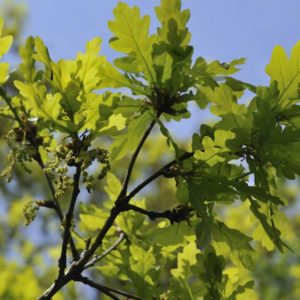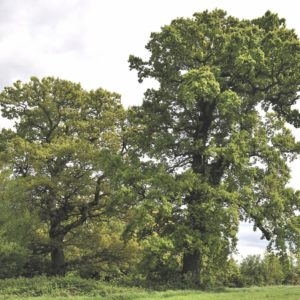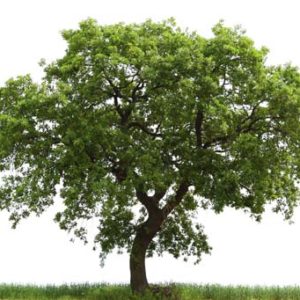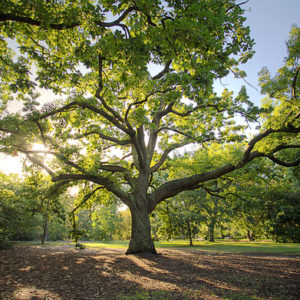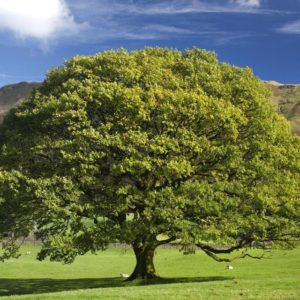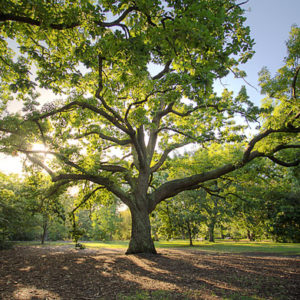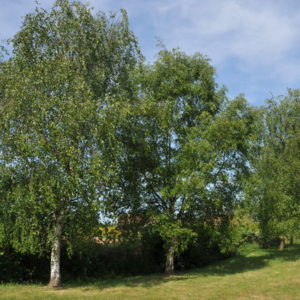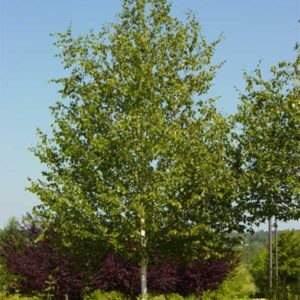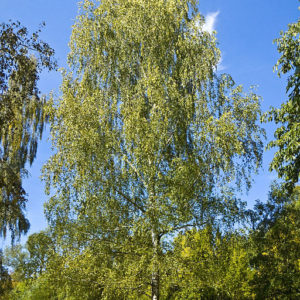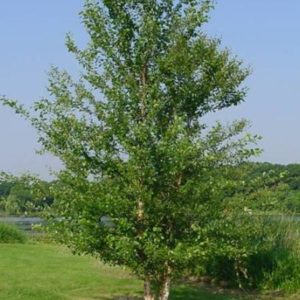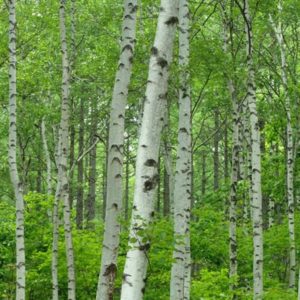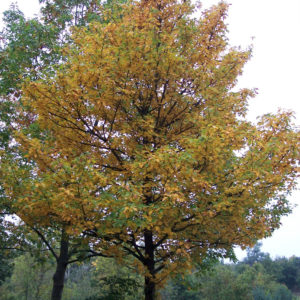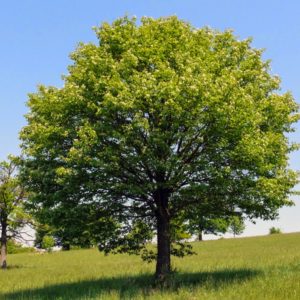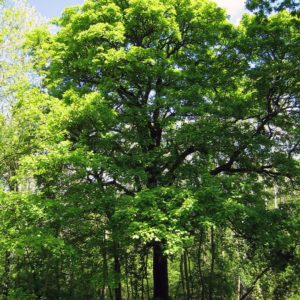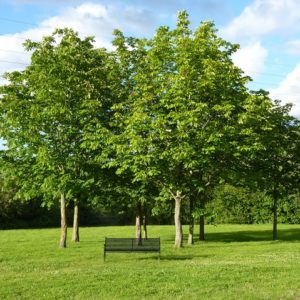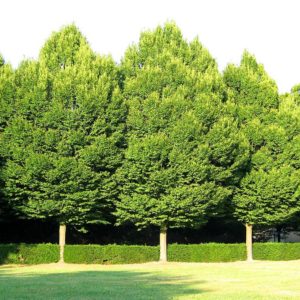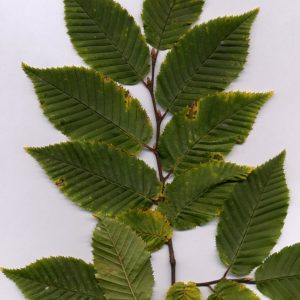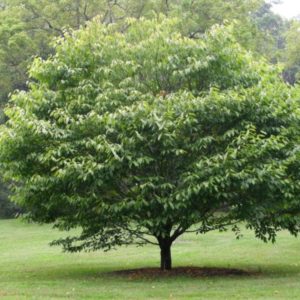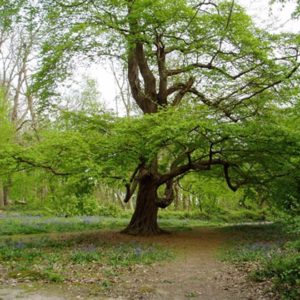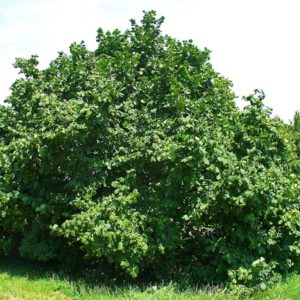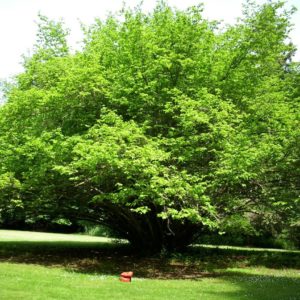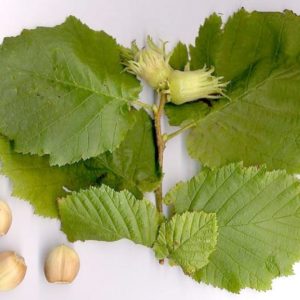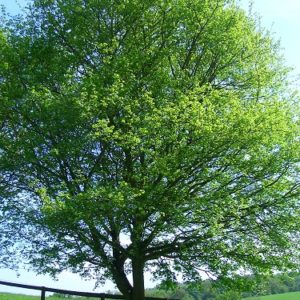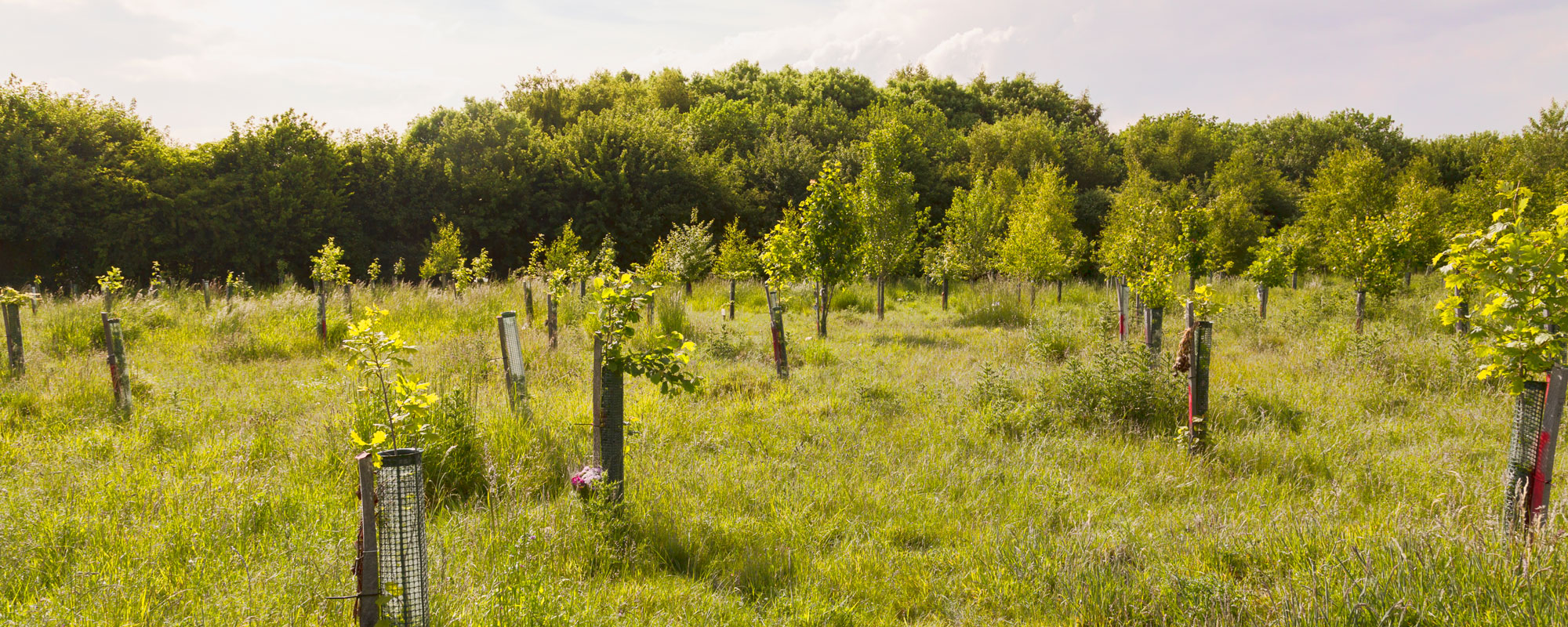
The Trees Of Oakfield Wood
Native trees
The term native is used for any species that has made its way to the UK naturally, not intentionally or accidentally introduced by humans. In terms of trees and plants, these are species that recolonised the land when the glaciers melted after the last ice age and before the UK was disconnected from mainland Europe.
During the ice age itself, areas of the UK were completely covered by a huge ice sheet. This prevented many trees and plants from growing and many species retreated south to survive the freeze. The ice sheets that covered large areas of the planet locked up lots of water from the Earth’s system. This made sea levels much lower than today and exposed a strip of land (now submerged beneath the Channel Sea) that connected the UK to mainland Europe.
As the Earth warmed and ice began to melt and retreat (over 10,000 years ago), species began to recolonise the once frozen land from the warmer south. However, trapped water released back into the system from the melting ice caused sea levels to rise again. Gradually the rising sea flooded the land bridge from the UK to Europe and prevented anymore species (unless they could fly) from colonising the UK.
Non-native
We call any species that has been brought to the UK by humans non-native. This means that species would not naturally live here if it were not for us intentionally or accidentally bringing them here. About 8,000 years ago, Neolithic man first arrived in Britain and brought new species, such as plant crops and livestock, and a few stowaways like the house mouse.
There are many non-native species living in the UK. Some, like Douglas fir and Sitka spruce, are used in forestry; and others, such as copper beech and London plane, were brought here for their beauty.
Our British tree pages features some of the most common non-native trees that have naturalised in our landscape.
What Trees Do Oakfield Wood Plant?
Oakfield Wood Wrabness is a an English native broad leaved woodland, we plant only English trees that are 18 month old saplings for the best
possible results. We plant trees annually, usually on the last Sunday every November. We invite friends, family and relatives to take part in
Tree Planting day, so that every one can be apart of what we think, is a special occasion. Each burial and ashes gets their tree planted on this day,
and we allow you to choose from our pre-selected tree choices.
English Oak – Quercus robur
In England, the English oak has assumed the status of a national emblem. This has its origins in the oak tree at Boscobel House, where the future King Charles II hid from his Parliamentarian pursuers in 1650 during the English Civil War; the tree has since been known as the Royal Oak. This event was celebrated nationally on 29 May as Oak Apple Day, which is continued to this day in some communities. ‘The Royal Oak’ is the third most popular pub name in Britain (541 in 2007) and has been the name of eight major Royal Navy warships. The naval associations are strengthened by the fact that oak was the main construction material for sailing warships. The Royal Navy was often described as ‘The Wooden Walls of Old England’ (a paraphrase of the Delphic Oracle) and the Navy’s official quick march is “Heart of Oak“. Furthermore, the oak is the most common woodland tree in England. An oak tree has been depicted on the reverse of the pound coin (the 1987 and 1992 issues) and a sprig of oak leaves and acorns is the emblem of the National Trust.
From https://en.wikipedia.org/wiki/Quercus_robur
Silver Birch - Betula pendula
The silver birch is a medium-sized deciduous tree, typically reaching 15 to 25 m (49 to 82 ft) tall (exceptionally up to 31 metres (102 ft)), with a slender trunk usually under 40 cm (16 in) diameter. The bark on the trunk and branches is golden-brown at first, but later this turns to white as a result of papery tissue developing on the surface and peeling off in flakes, in a similar manner to the closely related Paper birch (B. papyrifera). The bark remains smooth until the tree gets quite large, but in older trees, the bark thickens, becoming irregular, dark and rugged. Young branches have whitish resin warts and the twigs are slender, hairless and often pendulous. The buds are small and sticky, and development is sympodial, that is to say the terminal bud dies away and growth continues from a lateral bud. The species is monoecious with male and female catkins found in the same tree. Some shoots are long and bear the male catkins at the tip, while others are short and bear female catkins. The immature male catkins are present during the winter but the female catkins develop in the spring, soon after the leaves unfurl.
The leaves have short slender stalks and are 3 to 7 cm (1.2 to 2.8 in) long, triangular with broad, untoothed, wedge-shaped bases, slender pointed tips and coarsely double-toothed, serrated margins. They are sticky with resin at first but this dries as they age leaving small white scales. The foliage is a pale to medium green and turns yellow early in the autumn before the leaves fall. In mid-summer, the female catkins mature and the male catkins expand and release pollen, and wind pollination takes place. The small 1 to 2 ;mm winged seeds ripen in late summer on pendulous, cylindrical catkins 2 to 4 cm (0.8 to 1.6 in) long and 7 mm (0.3 in) broad. The seeds are very numerous and are separated by scales, and when ripe, the whole catkin disintegrates and the seeds are spread widely by the wind.
Silver birch can easily be confused with the similar downy birch (Betula pubescens). Yet, downy birch are characterised by hairy leaves and young shoots whereas the same parts on silver birch are hairless. The leaf base of silver birch is usually a right angle to the stalk while for downy birch it is rounded. In terms of genetic structure the trees are quite different but do, however occasionally hybridise.
Source: https://en.wikipedia.org/wiki/Betula_pendula
Wild Service - Sorbus torminalis
Sorbus torminalis with common names wild service tree, chequers, and checker tree, is a species of Sorbus native to Europe from England and Wales east to Denmark and Poland, south to northwest Africa, and southeast to southwest Asia from Asia Minor to the Caucasus and Alborz mountains.
It is a medium-sized deciduous tree growing to 15–25 m tall, with a trunk up to 1.3 m diameter. The bark is smooth and greyish, but flaky, peeling away in squarish plates to reveal darker brown layers. The leaves are 6–14 cm long and broad with a 2.5–5 cm petiole, dark green on both sides, with five to nine acute lobes; the basal pair of lobes are spreading, the rest more forward-pointing and decreasing in size to the leaf apex, and with finely toothed margins; the undersides have small hairs when young, but both sides are smooth and shiny when older; the autumn colour is yellow to red-brown. The flowers are 10–15 mm diameter, with five white petals and 20 creamy-white stamens; they are produced in corymbs 5–12 cm diameter in late spring to early summer, and are hermaphrodite and insect pollinated. The fruit is a globose to ovoid pome 10–15 mm diameter, greenish to russet or brown, patterned with small pale lenticel spots when mature in mid to late autumn.
There are two varieties:
- Sorbus torminalis var. torminalis. Europe, northwest Africa.
- Sorbus torminalis var. caucasica. Caucasus and Alborz Mountains. Leaves less deeply lobed than in var. torminalis.Source: https://en.wikipedia.org/wiki/Sorbus_torminalis
Hornbeam
Hornbeams are hardwood trees in the flowering plant genus Carpinus in the birch family Betulaceae. The 30–40 species occur across much of the temperate regions of the northern hemisphere.
The common English name hornbeam derives from the hardness of the woods (likened to horn) and the Old English beam “tree” (cognate with German Baum). The American hornbeam is also occasionally known as blue-beech, ironwood, or musclewood, the first from the resemblance of the bark to that of the American beech Fagus grandifolia, the other two from the hardness of the wood and the muscular appearance of the trunk, respectively. The botanic name for the genus, Carpinus, is the original Latin name for the European species.
Source: https://en.wikipedia.org/wiki/Hornbeam
Hazel - Corylus
The hazel (Corylus) is a genus of deciduous trees and large shrubs native to the temperate Northern Hemisphere. The genus is usually placed in the birch family Betulaceae, though some botanists split the hazels (with the hornbeams and allied genera) into a separate family Corylaceae. The fruit of the hazel is the hazelnut.
Hazels have simple, rounded leaves with double-serrate margins. The flowers are produced very early in spring before the leaves, and are monoecious, with single-sex catkins, the male catkins are pale yellow and 5–12 cm long, and the female ones are very small and largely concealed in the buds, with only the bright-red, 1-to-3 mm-long styles visible. The fruits are nuts 1–2.5 cm long and 1–2 cm diameter, surrounded by an involucre (husk) which partly to fully encloses the nut.
The shape and structure of the involucre, and also the growth habit (whether a tree or a suckering shrub), are important in the identification of the different species of hazel.
The pollen of hazel species, which are often the cause for allergies in late winter or early spring, can be identified under magnification (600X) by their characteristic granular exines bearing three conspicuous pores.
Field Maple - Acer campestre
Acer campestre, known as the field maple, is a flowering plant species in the soapberry and lychee family Sapindaceae. It is native to much of Europe, the British Isles, southwest Asia from Turkey to the Caucasus, and north Africa in the Atlas Mountains. It has been widely planted, and is introduced outside its native range in Europe and areas of USA and Western Australia with suitable climate.
It is a deciduous tree reaching 15–25 m (49–82 ft) tall, with a trunk up to 1 m (3 ft 3 in) in diameter, with finely fissured, often somewhat corky bark. The shoots are brown, with dark brown winter buds. The leaves are in opposite pairs, 5–16 cm (2.0–6.3 in) long (including the 3–9 cm (1.2–3.5 in) petiole) and 5–10 cm (2.0–3.9 in) broad, with five blunt, rounded lobes with a smooth margin. Usually monoecious, the flowers are produced in spring at the same time as the leaves open, yellow-green, in erect clusters 4–6 cm (1.6–2.4 in) across, and are insect-pollinated. The fruit is a samara with two winged achenes aligned at 180°, each achene is 8–10 mm (0.31–0.39 in) wide, flat, with a 2 cm (0.79 in) wing.
The two varieties, not accepted as distinct by all authorities, are:
- A. c. var. campestre – downy fruit
- A. c. var. leiocarpum (Opiz) Wallr. (syn. A. c. subsp. leiocarpum) – hairless fruit
The closely related Acer miyabei replaces it in eastern Asia.
Report a Tree
Sometimes the unavoidable happens, and one of the Trees of Oakfield Wood Wrabness requires attention by one of our experienced team members.
We are experts at helping our trees develop in both a natural healthy way, whilst remaining safe for the public, but with over 2000 trees to look after, it sometimes helps if a member of the public can let us know about something they have spotted. So please, drop us a message using the forms below to let us know.

